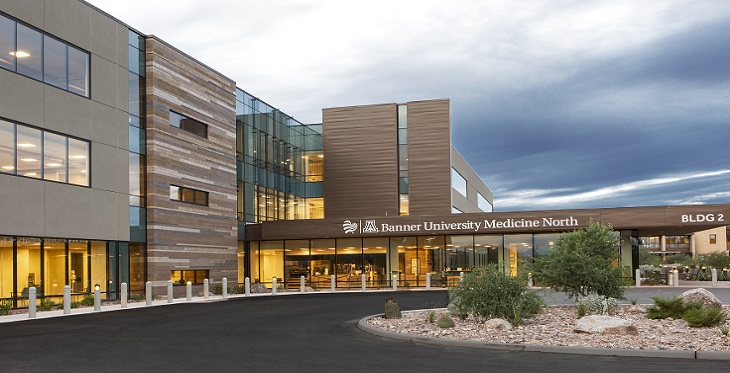I’ve been a healthcare executive for more than 15 years in Tucson, and I like to think that I have seen a lot in my tenure. I couldn’t have been more wrong. Nor could anything have prepared me for leading close to 6,000 team members through a once-in-a-lifetime global pandemic. Though 15 months later the health crisis still isn’t over, we are in a much better position to reflect on all the work that was done in the past year. Sometimes it seems like it was all a dream, or maybe I am still trying to catch up on lost sleep.
Once the severity of the pandemic was known, we knew we were in this for the long haul. With information changing by the hour, we quickly jumped into action and addressed how we would provide care to our community, who were afraid and confused, as well as provide a safe workplace for our frontline teams who were, and still are the most essential of workers.
It was essential to keep everyone as safe as possible with the limited research and understanding of the virus that we were dealing with. It was immediately clear that we needed to limit the number of people inside our hospitals and clinics to focus on caring for our patients without compromising anyone’s health.
While telehealth existed at Banner – University Medicine Tucson prior to the pandemic in the acute space (hospital setting), it wasn’t utilized in our ambulatory spaces (primary care clinics, exp.). Additionally, prior to March 2020, Banner Health as a system did not have a standardized virtual telehealth program; the pandemic changed all of this.
In March 2020, Banner Health launched eVisit, a telehealth platform. We quickly trained over 6,000 team members and providers on how to use the platform; this was the fastest implementation of a telehealth program in a system of our size. Instructional, interactive videos were sent out to team members, in addition to live training sessions and support from eVisit experts. Then, in October 2020, we launched eVisit Express, a new and improved upgrade to the original platform, and the use of telehealth exploded in Tucson.
From March 2020 – March 2021, 27% of Banner – University Medicine Tucson’s ambulatory visits were via telehealth, with most visit volumes greatly coinciding with COVID-19 surges (April 2020, July 2020, January 2021). These visits helped get us back to pre-pandemic levels and helped us shine, as Banner – University Medicine Tucson accounted for 44% of all telehealth visits across the entire Banner Health system, spanning 6 states. The largest sector where we stood out was in outpatient behavioral health.
Banner – University Medicine Tucson has a large behavioral health patient population and telehealth appointments were rarely used prior to the pandemic. From April 2020 – March 2021, 92% of all our Banner Tucson behavioral health visits were virtual; the Banner Health system average was 76%. Even as COVID-19 cases start to decline, our telehealth visits are still steadily increasing, forcing us to reevaluate how we deliver care to this vulnerable population. As it’s currently trending, we will continue to encourage telehealth visits for our behavioral health population in Tucson, so long as it is appropriate for the patient and they meet specific criteria.

We are currently piloting direct scheduling of telehealth appointments in a few of our Phoenix primary care clinics, with hopes of expanding to Tucson in the near future. We are also experimenting with telehealth appointment reminders to increase appointment fulfillment rates.
The future for telehealth looks bright, especially in Arizona. Governor Doug Ducey recently signed legislation to dramatically expand telehealth services, lifting geographic restrictions for telehealth visits throughout the state and making telehealth visits reimbursable at the same rate as in-person visits. Similar to actions taken in our State, Congress is reintroducing two bills to remove geographic restrictions for telehealth visits and expand other services as well.
Looking back, I am grateful for many things, including the fact that we were able to weather this health crisis while the world watched in awe of our healthcare heroes. Though the losses were great, our community showed how resilient we are when we come together. We truly are Banner Strong.

